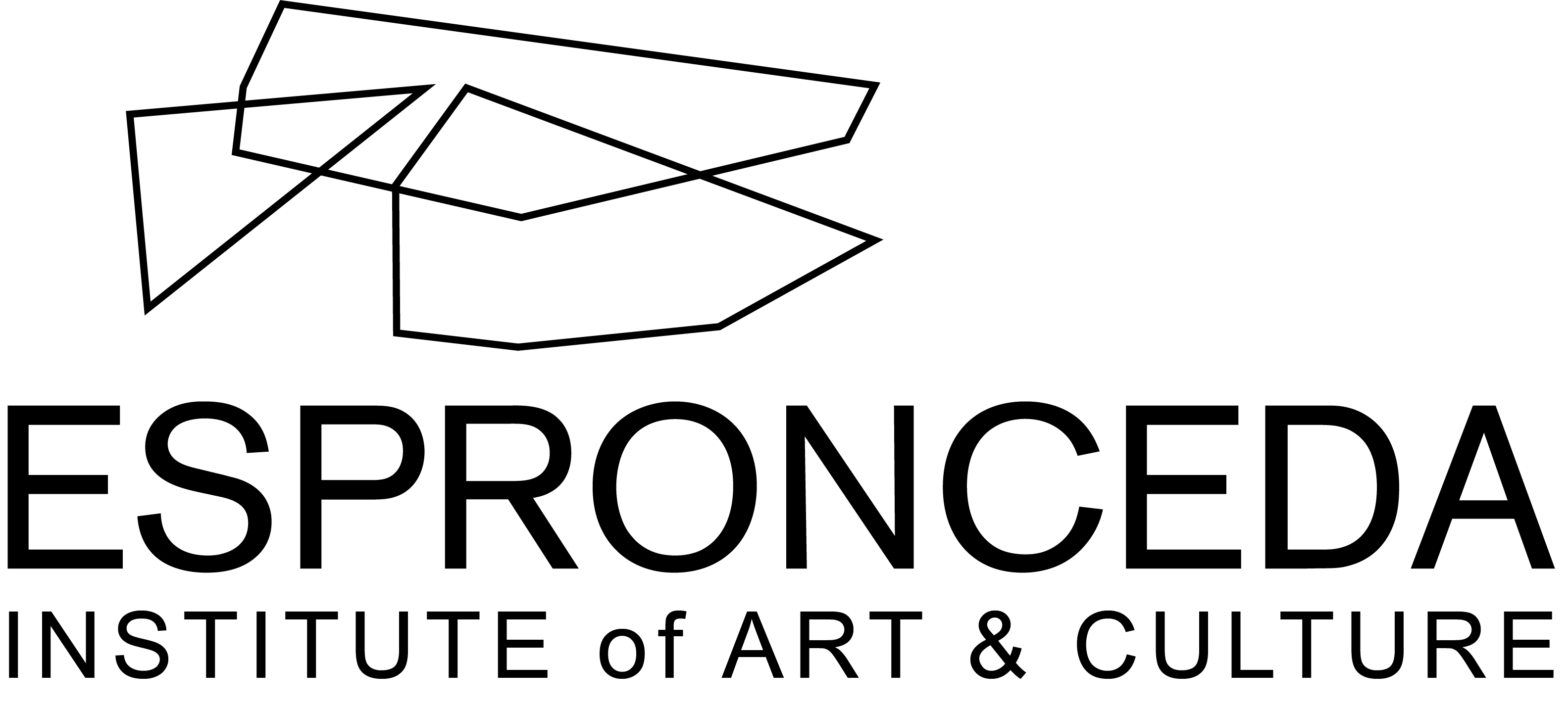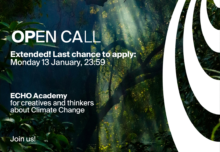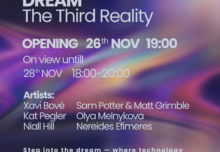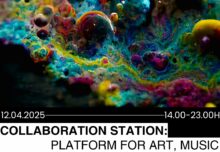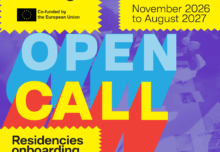Presented by: ESPRONCEDA – Institute of Art and Culture
Location: Carrer de Espronceda 326, Nave 4–5, 08027 Barcelona
Vernissage: October 16th, 2025, 19:00h
On view: October 17–25, 2025 | Daily, 18:00–21:00h
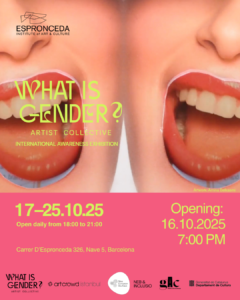
For the first time in Spain, the international art platform What is Gender? (WISG) arrives in Barcelona with a collective exhibition hosted by ESPRONCEDA – Institute of Art & Culture. The show opens on October 16th, 2025 at 19:00h and will remain on view until October 25th, 2025.
Challenging gender beyond borders
What is Gender? is a nomadic and interdisciplinary art platform that brings together a growing community of artists committed to difference, tolerance, and diversity. Through experimental and collaborative practices, the artists collective questions gender beyond binaries, fixed roles, and borders—opening spaces for reflection on identity, social roles, marginalisation, and belonging.
The exhibition presents works created in dialogue with the local context by international artists —including four based in Catalonia— under the guidance of an international curatorial team: Henrik Sprengel (ESPRONCEDA), Maribel Navarro. (Galeries de Catalunya), Anastasia Zaborovskaia, Şanel Şan Sevinç (Artcrowdistanbul Gallery), Nilgün Sabar, and Gilles Grassioulet (WISG?).
About NEB & Inclusió
The exhibition is part of NEB & Inclusió, a program by ESPRONCEDA as an official partner of the New European Bauhaus (NEB). This European initiative blends design, culture, social inclusion, and innovation to rethink how we live together. NEB & Inclusio promotes collaborative artistic practices that address contemporary challenges such as climate change, urban transformation, and social inequality.
About the artists
This edition in Barcelona features 7 local artists, chosen through a two-month open call runned by ESPRONCEDA, in order to select local artists living in Barcelona.
- Marina Salazar – Artist, designer, and PhD candidate, founder of No Queda Tinte. Her provocative, kitsch-inflected practice combines restoration, object transformation, and creative experimentation, questioning the symbolic power of porcelain figurines.
- Gastón Lisak – Conceptual artist and researcher exploring identity, memory, and the notion of the anachronistic object. Through his project Mundane Archaeology, he investigates how everyday elements can shift perception between the familiar and the strange.
- Dani Torrent – Illustrator, writer, and visual artist whose work delves into intimacy, desire, and identity. His creations, from children’s books to paintings, evoke emotional depth and human connection beyond stereotypes.
- Iván Federico Wenger – A self-taught visual artist whose paintings and drawings merge human figures with natural and fantastical elements. His practice explores dreamlike worlds, often drawing from Latin American fauna and symbolism.
- Eugenio Shapoval – Painter whose work is rooted in his Ukrainian heritage and life in post-Soviet contexts. His textured, organic compositions use a poetic color palette to evoke contemplation, serenity, and reflection.
- Anastasia Zaborovskaia – Visual artist combining the tradition of oil painting with contemporary techniques. Her practice merges academic training with experimental approaches, creating works that reflect technical mastery and personal exploration.
- Sandra Sotelo Reyes – Researcher, activist, and dancer whose transdisciplinary practice weaves ecofeminist narratives and political ecology into movement-based artistic research. Her work often addresses the consequences of colonialism and extractivism.
Alongside the local participants, 15 artists from the WISG collective join this edition. Their diverse backgrounds and practices span painting, sculpture, installation, photography, design, and interdisciplinary research, enriching the dialogue between cultures and artistic perspectives.
- Amina Belkasmi – Multidisciplinary artist and designer who has worked as an art director, graphic designer, and illustrator. Her practice combines professional design experience with independent art projects, exploring identity, heritage, and cross-cultural narratives through a variety of media and visual forms.
- Christine Berchadsky – Visual artist focused on the expressive potential of color. Her work integrates carefully chosen materials and experimental techniques, often inspired by her intimate connection with nature, inviting viewers to experience color both reflectively and joyfully.
- Cecilia Campeas – Artist working with sculpture, installations, and textiles. Using handcrafted techniques such as crochet, she addresses themes of identity, gender, and freedom, highlighting feminine heritage and emotional narratives while challenging societal constraints on women.
- Gilles Gabriel Grassioulet – Franco-Swiss artist creating layered works on transparent surfaces. His practice draws from his natural surroundings and visual perception, exploring the delicate interplay between the visible and invisible, and encouraging viewers to reconsider spatial and visual experiences.
- Alix Martin – Graphic artist exploring the boundaries between visual language and printed objects. His series Bibliocuts transforms books into sculptural forms, merging design, publishing, and artistic practice, and questioning the limits between functional and conceptual art.
- Adrien Savigny – Artist focused on drawing after studies in photography, fashion, and textile design. He has exhibited across Switzerland and Istanbul, combining personal artistic exploration with ongoing training in art therapy, creating works that bridge visual practice and social engagement.
- Nilgün Sabar – Artist working across painting, sculpture, and art therapy. Her practice integrates psychological and symbolic research to explore complex emotions, marginalization, and women’s issues, combining artistic creation with educational workshops and community engagement.
- Kerem Ağralı – Painter and visual artist reimagining architectural forms from human history. By compressing past, present, and future into single compositions, his work invites reflection on cultural continuity, transformation, and the viewer’s place within a shared human narrative.
- Chiara de Rocchi – Artist and designer creating handcrafted sculptures and functional objects. Her work merges contrasting materials and techniques, exploring duality and tension in form and texture, and combining functional design with conceptual art practice.
- Pinar Yeşilada – Sculptor and photographer exploring social memory, collective unconscious, and human nature. Her internationally exhibited works bring together Cypriot heritage and contemporary artistic investigation, blending cultural reflection with formal experimentation.
- Yonca Saraçoğlu – Visual artist working across painting, sculpture, drawing, and digital design. Her multidisciplinary practice combines formal training and experimental approaches to explore materiality, form, and conceptual intersections across multiple visual languages.
- Arden Oluk – Multidisciplinary artist influenced by Zen and Far Eastern cultures. She combines mixed-media techniques across diverse materials, exploring spirituality, cultural references, and the intersection of art, design, and personal practice.
- Banu Birecikligil – Painter translating surreal and mythological imagery into a childlike visual language. Her work evokes personal narratives, reflections on nature, and imaginative storytelling, merging fantastical elements with introspective and symbolic expression.
- Burcu Aksoy – Visual artist working with photography, photosculpture, and installation. Her practice investigates unconventional perceptions of objects and space, transforming them into new structural forms and experiential environments across digital and physical platforms.
- Antonio Cosentino – Contemporary artist and co-founder of the Hafriyat Group. His work incorporates urban imagery and everyday materials, blending painting with reflections on city life and environment, and exploring the poetic potential of mundane objects in contemporary art.
By hosting WHAT IS GENDER?, ESPRONCEDA reinforces its commitment to intersectional artistic practices and community-based dialogue.
Join us at the gallery!
Visits are welcome from 18:00 to 21:00, and we recommend sending an email to info@espronceda.net if you wish to plan your visit.
